API RP 2A-WSD-2007 Recommended Practice for Planning, Designing and Constructing Fixed Offshore Platforms-Working Stress Design
Подождите немного. Документ загружается.

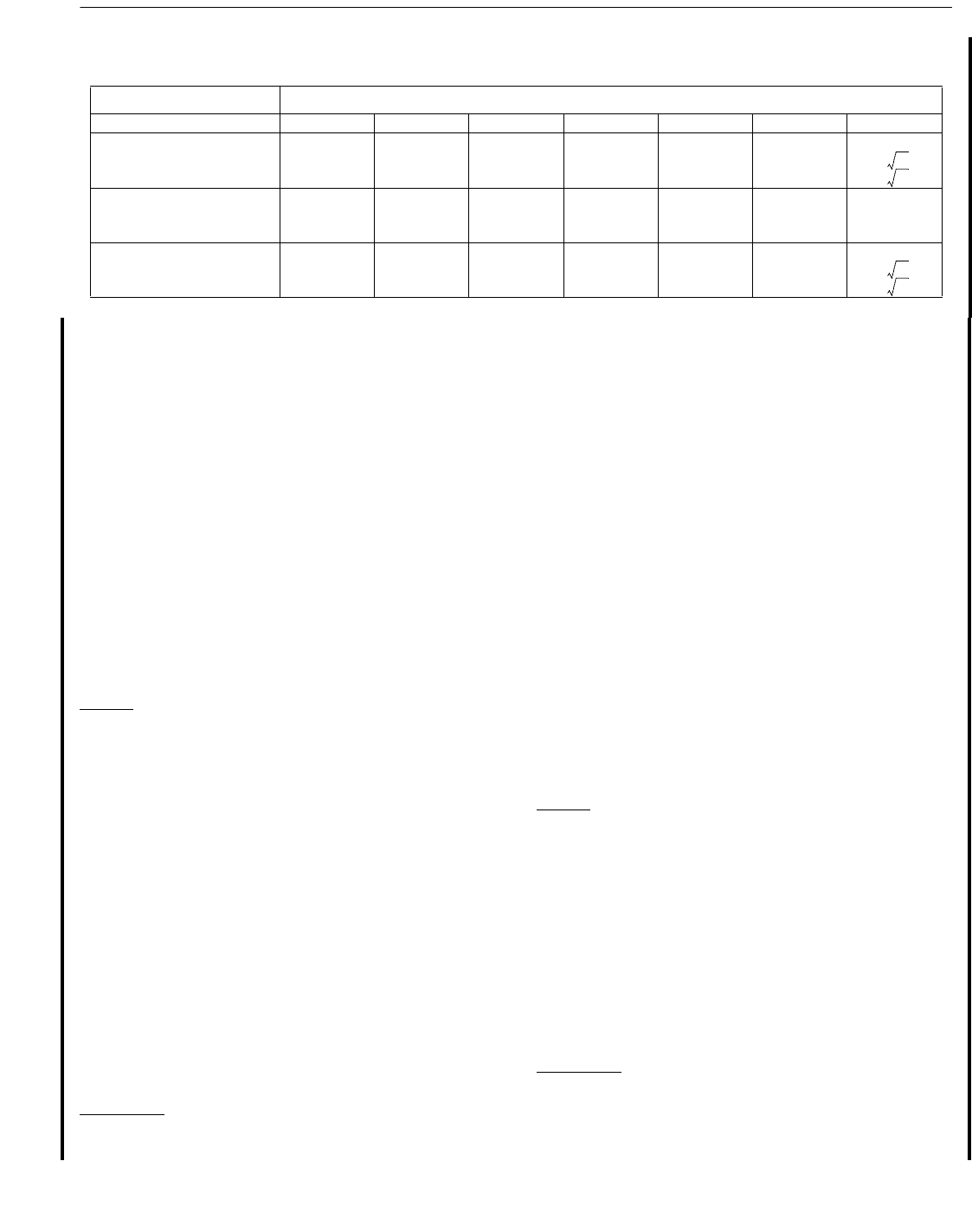
RECOMMENDED PRACTICE FOR PLANNING, DESIGNING AND CONSTRUCTING FIXED OFFSHORE PLATFORMS—WORKING STRESS DESIGN 229
Note: D
i
units are [m] and D
r
units are [-], not [%]
and
(C6.4.3-6)
Should either of the above conditions not be met, then the
pile will behave unplugged and the following equation should
be used for computing the end bearing capacity:
(C6.4.3-7)
The full pile end bearing computed using equation (C6.4.3-
4) for a plugged pile should not be less than the end bearing
capacity of an unplugged pile computed according to equa-
tion (C6.4.3-7).
C6.4.3c.3 Offshore UWA-05
Friction
Lehane et al., (2005a) summarize the results of recent
research work at the University of Western Australia on
development of axial pile design criteria of open and closed
ended piles driven into silica sands. The full design method
(described in Lehane et al., 2005a,b) for unit friction on pipe
piles includes a term allowing for favourable effects of soil
dilatancy (similar to ICP-05) and an empirical term allowing
for partial soil plugging during pile driving. Lehane et al. rec-
ommend for offshore pile design to ignore these two favour-
able effects (dilatancy and partial plugging), resulting in the
recommended equation C6.4.3-3 and associated Table
C6.4.3-1 parameter values. Use of the original (“full”) design
equations in Lehane et al., (2005a) may be considered (partic-
ularly for small diameter piles, D < 30 in. (0.76 m)), provided
that larger factors of safety be considered in the WSD design.
Reference should be made to Lehane et al., (2005a) for a dis-
cussion on reliability based design using the UWA-05
method.
End Bearing
Lehane et al., (2005a,b) present design criteria for ultimate
unit end bearing of plugged open ended pipe piles. Their
“full” design method for pipe piles includes an empirical term
allowing for the favourable effect of partial plugging during
pile driving. For offshore pile design, Lehane et al., (2005a,b)
recommend to ignore this effect, resulting in the recom-
mended design equation for plugged piles in the Offshore
UWA-05 method:
(C6.4.3-8)
Since the UWA-05 method considers non-plugging under
static loading to be exceptional for typical offshore piles, the
method does not provide criteria for unplugged piles. The
unit end bearing qp calculated in C6.4.3.-8 is therefore acting
across the entire tip cross section. The use of qc,av,1.5D in
equation C6.4.3-8 is not recommended in sand profiles where
the CPT qc values shows significant variations in the vicinity
of the pile tip or when penetration into a founding stratum is
less than five pile diameters. For these situations, Lehane et
al., (2005a) provide guidance on the selection of an appropri-
ate average qc value for use in place of qc,av,1.5D.
C6.4.3c.4 Fugro-05
Friction
The Fugro-05 method is a modification of the ICP-05
method and was developed as part of a research project for
API The unit friction equations were unfortunately misprinted
in (Fugro 2004; Kolk et al., 2005) and these references are not
to be used in design. However, the correct equations are pre-
sented both by Lehane et al., (2005a) and by equation C6.4.3-
3 and the parameter values in Table C6.4.3-1. Like the “full”
ICP-05 and the “full” UWA-05 methods, it is recommended to
consider larger factors of safety when using the Fugro-05
method. Reference is made to CUR (2001), for a discussion
on reliability based design using this method.
End Bearing
The basis for the ultimate unit end bearing on pipe piles
according to Fugro-05 is presented in the research report to
API (Fugro 2004) and summarised by Kolk et al., (2005). The
recommended design criterion for plugged piles is given by:
Table C6.4.3-1—Unit Skin Friction Parameter Values for Driven Open-ended Steel Pipes
(Simplified ICP-05, Offshore UWA-05 and Fugro-05 Methods)
Method Parameter
abcdeuv
Simplified ICP-05
compression
tension
0.1
0.1
0.2
0.2
0.4
0.4
1
1
0
0
0.023
0.016
Offshore UWA-05
compression
tension
0
0
0.3
0.3
0.5
0.5
1
1
0
0
0.030
0.022
2
2
Fugro-05
compression
tension
0.05
0.15
0.45
0.42
0.90
0.85
0
0
1
0
0.043
0.025
4 A
r
4 A
r
2 A
r
2 A
r
D
i
D
CPT
⁄ 0.083q
cz,
p
a
<<
Q
p
πWT D WT–()q
cz,
=
07
q
p
q
cav1.5D,,
0.15 0.45A
r
+()=
07
Copyright American Petroleum Institute
Provided by IHS under license with API
Licensee=Indonesia location/5940240008
Not for Resale, 10/22/2008 00:07:12 MDT
--`,,```,,,`,,,,,,,,,,,,,,`,``,`-`-`,,`,,`,`,,`---
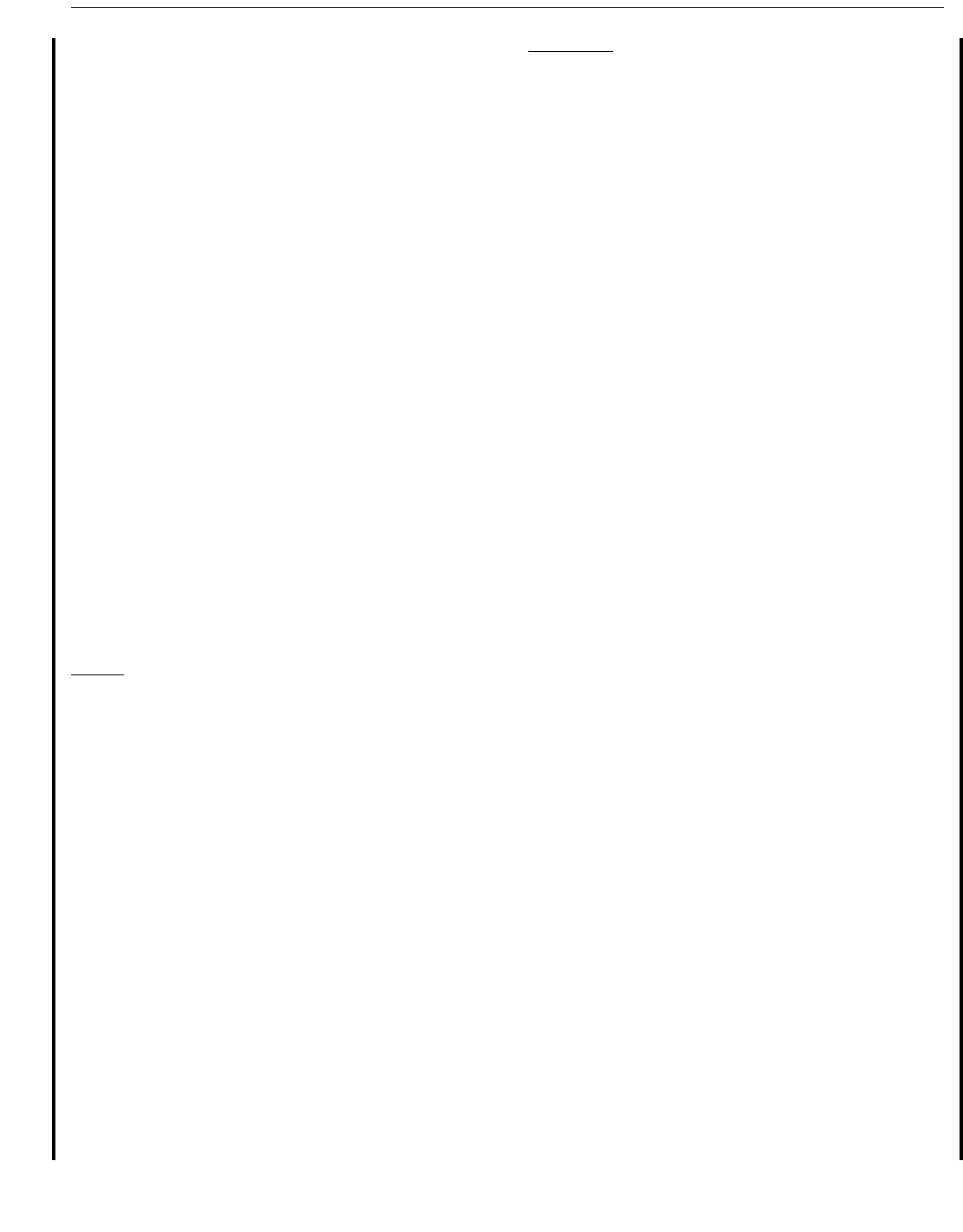
230 API RECOMMENDED PRACTICE 2A-WSD
(C6.4.3-9)
Both UWA-05 and Fugro-05 do not specify unplugged end
bearing capacity because typical offshore piles behave in a
plugged mode during static loading (CUR, 2001). It can be
shown that plugged behaviour applies if either:
a. The cumulative thickness of sand layers within a soil plug
is in excess of 8D, or
b. The total end bearing (Q
p
) is limited as follows:
(C6.4.3-10)
Where the cumulative frictional capacity of the clay layers
within the soil plug (Q
f,i,clay
) can be estimated using similar
criteria as for computing estimated pile friction in clay (Sec-
tion 6.4.2).
The above criteria apply for fully drained behaviour of
sand within the pile plug. Criteria for undrained/partially
drained sand plug behaviour are presented by Randolph et al.,
(1991).
For the exceptional case of unplugged end bearing behav-
iour in fully drained conditions, reference is made to CUR
(2001) and Lehane & Randolph (2002) for estimating end
bearing capacity.
C6.4.3c.5 NGI-05
Friction
Ultimate unit skin friction values for tension (f
t,z
) and com-
pression (f
c,z
) for driven open-ended steel pipe piles in the
NGI-05 method are given by Clausen et al., (2005):
(C6.4.3-11)
(C6.4.3-12)
where
(C6.4.3-13)
(C6.4.3-14)
(C6.4.3-15)
Note: D
r
> 1 should be accepted and used.
Like the “full” ICP-05, “full” UWA-05 and the Fugro-05
methods, it is recommended to consider higher factors of
safety when using the NGI-05 method.
End Bearing
The recommended design equation for ultimate unit end
bearing of plugged open-ended steel pipe piles in NGI-05
method (Clausen et al., 2005) is:
(C6.4.3-16)
where
(C6.4.3-17)
Note: D
r
> 1 should be accepted and used.
The resistance of non-plugging piles should be computed
using an ultimate unit wall end bearing value (q
w,z
) given by:
(C6.4.3-18)
and an ultimate unit friction (f
p,z
) between the soil plug and
inner pile wall given by:
(C6.4.3-19)
The lower of the plugged resistance (equation C6.4.3-16)
and unplugged resistance (equations C6.4.3.18 and
C6.4.3.19) should be used in design.
C6.4.3d Parameter Value Assessment
The geotechnical site investigation should provide infor-
mation adequate to capture the spatial variability, horizontally
and vertically, of layer boundaries and layer parameter val-
ues.
For any CPT method, the computed pile capacity in sand is
most sensitive to cone penetration resistance q
c
, followed by
tan δ
cv
and σ′
vo
. Since an accurate capacity assessment is a
function of the accuracy of both the model and parameters,
guidance regarding selecting appropriate parameter values is
given below.
• Parameter q
c
The CPT should measure qc with apparatus and procedures
that are in general accordance with those published by ASTM
(2000). In particular, ISO (2005) prescribes cones with a base
area in the range of 500 mm
2
to 2000 mm
2
and a penetration
rate 20 ± 5 mm/s.
It is noted that the CPT-based design methods were estab-
lished for cone resistance values up to 100 MPa. Caution
should be used when applying the enclosed methods to sands
with higher resistances.
A measured, continuous q
c
profile is preferable to an
assumed/interpolated discontinuous profile but is generally
not achievable offshore at large depths below seabed with
q
p
8.5p
a
q
cav1.5D,,
p
a
-------------------
⎝⎠
⎛⎞
0.5
A
0.25
r
=
Q
p
Q
ficlay,,
e
L
s
D⁄
≤
07
07
f
tz,
zL⁄()p
a
F
sig
F
Dr
0.1σ′
vo
>=
f
cz,
1.3 zL⁄()p
a
F
sig
F
Dr
0.1σ′
vo
>=
F
sig
σ′
vo
p
a
⁄()
0.25
=
F
Dr
2.1 D
r
0.1–()
1.7
=
D
r
0.4 q
cz,
22 σ′
vo
p
a
()
0.5
()⁄[]0.1>ln=
q
p
0.7q
cav1.5D,,
13D
r
2
+
---------------------------=
D
r
0.4 q
cav1.5D,,
22 σ′
vo
p
a
()
0.5
()⁄[]0.1>ln=
q
wz,
q
cz,
=
f
pz,
3f
cz,
=
Copyright American Petroleum Institute
Provided by IHS under license with API
Licensee=Indonesia location/5940240008
Not for Resale, 10/22/2008 00:07:12 MDT
--`,,```,,,`,,,,,,,,,,,,,,`,``,`-`-`,,`,,`,`,,`---
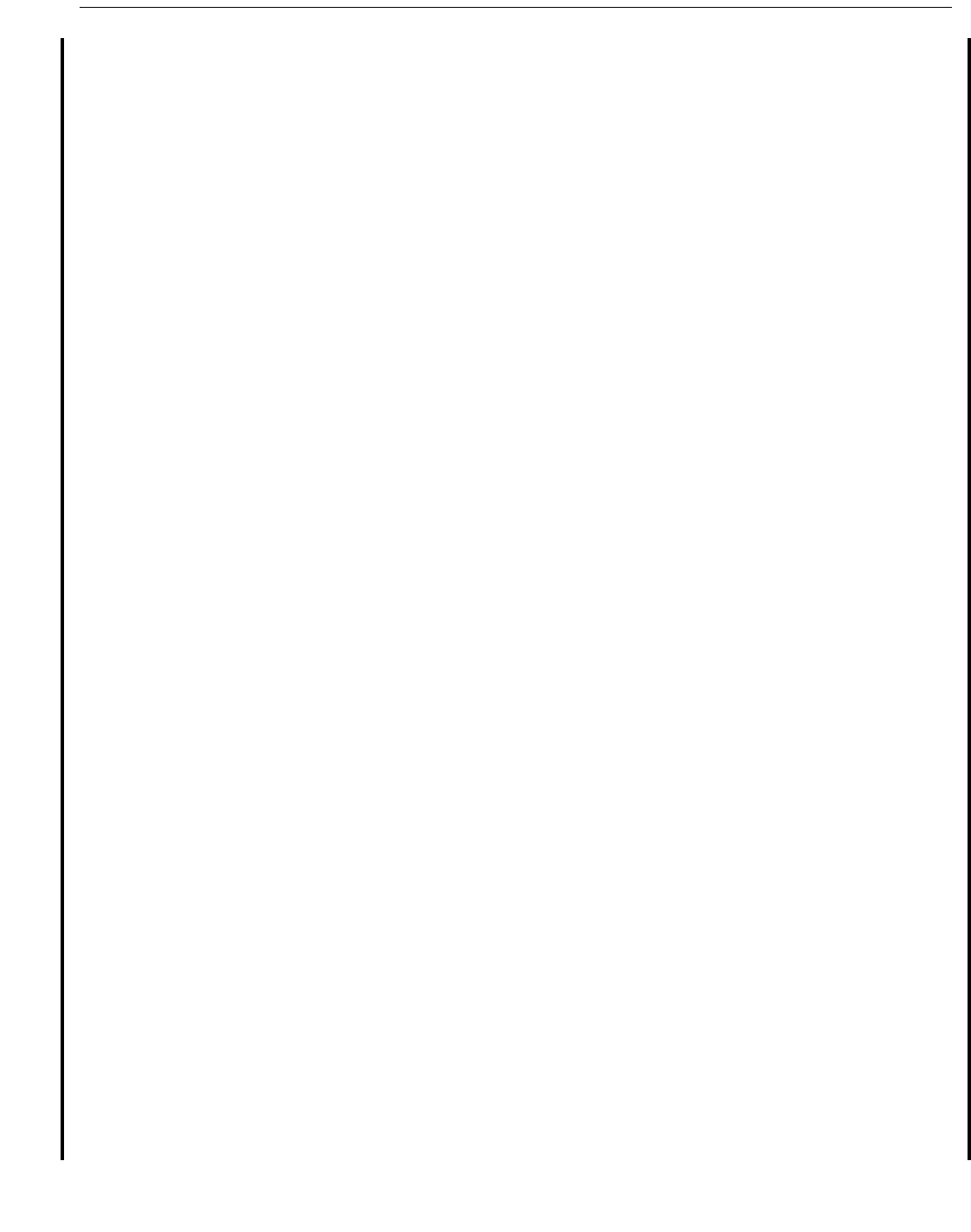
RECOMMENDED PRACTICE FOR PLANNING, DESIGNING AND CONSTRUCTING FIXED OFFSHORE PLATFORMS—WORKING STRESS DESIGN 231
downhole CPT apparatus. This is generally due to factors
such as limited stroke and/or maximum resistance being
achieved. When (near) continuous qc profiles are needed, one
can consider overlapping CPT push strokes.
With discontinuous CPT data, a “blocked” q
c
profile can
be used: the soil profile is divided into layers, in each of
which q
c
is assumed to vary linearly with depth. “Blocked”
profiles should be carefully assessed, particularly when they
contain maximum q
c
values at the ends of CPT push strokes.
When the push strokes contain no maximum q
c
data, a mov-
ing window may be used to determine the average (and stan-
dard deviation) profile, through which a straight line can be
fitted. If present, thin layers of weaker material (e.g., silt or
clay) need to be modelled conservatively.
For geotechnical investigations, where several vertical
CPT profiles have been made (e.g., one per platform leg), it is
suggested that at least two approaches be employed: capacity
should be first based on the combined averaged q
c
profile
and then based on individual q
c
profiles. Judgment is
required to select the most appropriate q
c
profile and associ-
ated final axial capacity.
• Parameter σ′
vo
Usually, pore water pressures in sands are hydrostatic, and,
in this case, σ′
vo
equals (γ
sub
*z), where γ
sub
is the submerged
soil unit weight. Offshore sands are generally very dense and
often silty. In general, design γ
sub
values in sands should be
based on measured laboratory values (corrected for sampling
disturbance effects) which should be compatible with relative
density (D
r
) estimated from q
c
and laboratory maximum and
minimum dry unit weight values.
• Parameter D
r
Common practice is to use the Ticino Sand relationship
between q
c
and D
r
as proposed by Jamiolkowski et al.,
(1988):
(C6.4.3-20)
where
p′
m
= soil effective mean in-situ soil stress at depth
z = (σ′
vo
+ 2 σ′
ho
)/3 with p′
m
and q
c
in kPa.
Ticino Sand is a medium grained silica sand with no fines.
A reasonably comprehensive database is available for this
sand (Baldi et al., 1986). However, D
r
assessment for the
NGI-05 method should be according to Equations C6.4.3-15
and C6.4.3-17. Most q
c
– D
r
relationships are not valid for
silty sands. However, q
c
may be adjusted for such materials to
derive a “Clean Sand Equivalent Normalised Cone Resis-
tance” (e.g., Youd et al., 2001).
• Parameter tan δ
cv
The constant volume interface friction angle, δ
cv
, should be
measured directly in laboratory interface shear tests. The rec-
ommended test method is by ring shear apparatus, but the
direct shear box may also be used. Guidance on test proce-
dures is provided in Jardine et al., (2005).
If site-specific tests cannot be performed, the constant vol-
ume interface friction angle may be estimated as a function of
mean effective particle diameter (D
50
) using Jardine et al.,
(2005). An upper limit of tan δ
cv
= 0.55 (δ
cv
= 28.8 degrees)
applies to all methods as shown on Figure C6.4.3-1. For
materials with unusually weak grains or compressible struc-
tures, this method may not be appropriate. Of particular
importance are sands containing calcium carbonate, for
which specific advice is given in Section C6.4.3e.
C6.4.3e Application of CPT-based Methods
• ‘t-z’ Data for Axial Load-deformation Response
No strain softening is applicable. However, unlike for the
method in the main text, the peak unit skin friction in com-
pression and tension at a given depth, f
c,z
and f
t,z
are not
unique and are both dependent on pile geometry. They
depend not only on the pile diameter and wall thickness but
also on the pile total penetration. An increased pile penetra-
tion will decrease these ultimate values at a given depth.
•‘q-z’ Data for Axial Load-deformation Response
Unit end bearing (q
p
) is assumed to be fully mobilized at a
pile tip displacement value of 0.1D
o
. This displacement is
consistent with the manner in which pile load test data were
interpreted.
• Other Sands—Carbonate Sands, Micaceous Sands,
Glauconitic Sands and Volcanic Sands, Silts and Clayey
Sands.
Some cohesionless soils have unusually weak structures/
compressible grains. These may require special in-situ and/or
laboratory tests for selection of an appropriate design method
and design parameters. Reference is made to Thompson and
Jardine (1998) and Kolk (2000) for pile design in carbonate
sand, and to Jardine et al., (2005) for guidelines on pile
design in other sands and silts. Consideration should be given
to using a design method for clays in case of low permeability
sands and silts. All former methods should be applied cau-
tiously since limited data are available to support their reli-
ability in these sediments.
• q
c
, in Gravel
The measured q
c
data should not be taken at face value in
this cohesionless soil type and appropriate adjustments
should be made. For example, CPTs made in (coarse) gravels,
especially when particle sizes are in excess of 10% of the
CPT cone diameter, are misleading, and one possible
approach could be to use the lower bound qc profile. Alterna-
07
D
r
1
2.93
----------
q
c
205 p′
m
()
0.51
----------------------------
⎝⎠
⎛⎞
ln=
07
Copyright American Petroleum Institute
Provided by IHS under license with API
Licensee=Indonesia location/5940240008
Not for Resale, 10/22/2008 00:07:12 MDT
--`,,```,,,`,,,,,,,,,,,,,,`,``,`-`-`,,`,,`,`,,`---
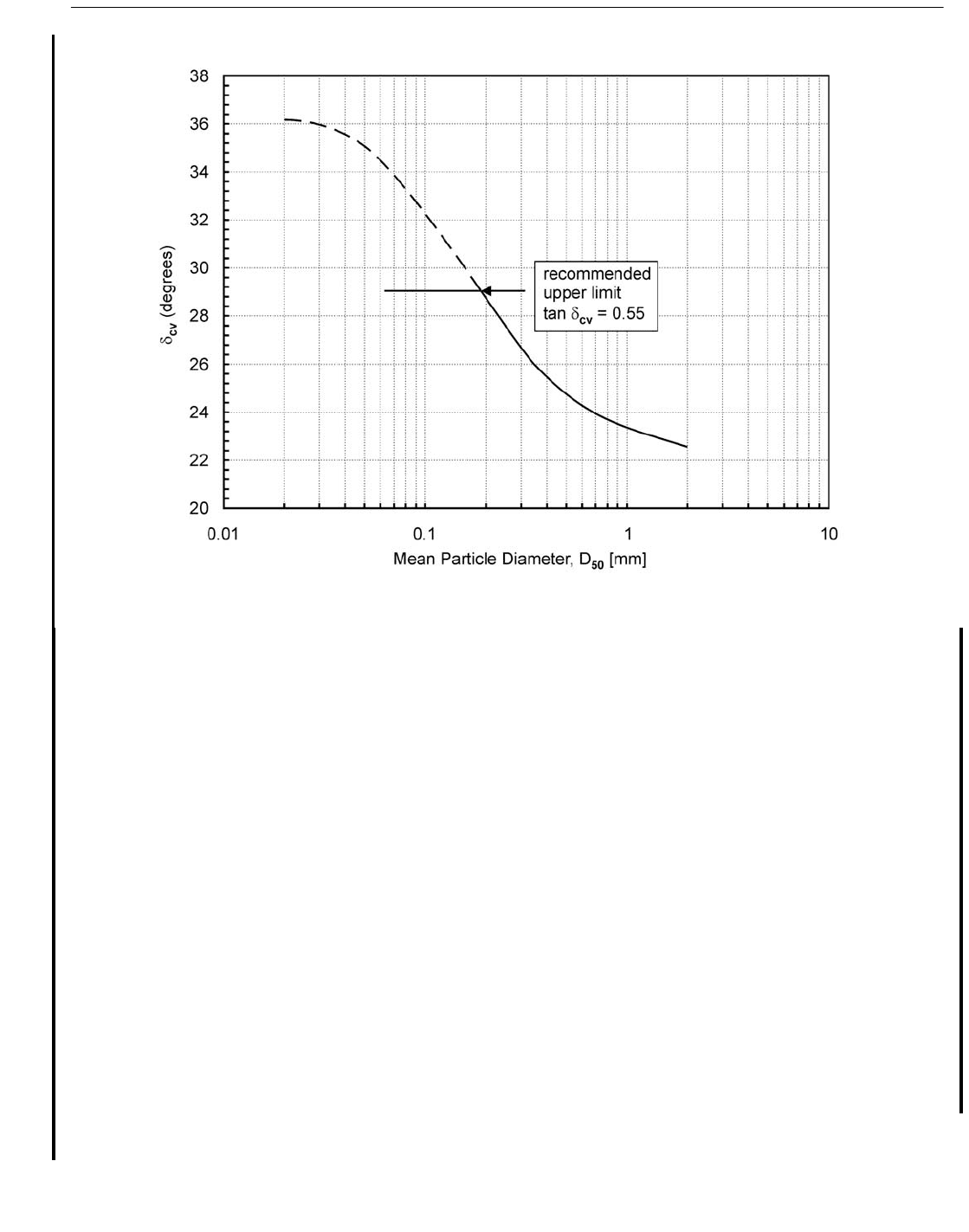
232 API RECOMMENDED PRACTICE 2A-WSD
tively, one may estimate an appropriate design qc profile
from adjacent sand layers.
• Weaker Clay Layers Near Pile Tip
The use of q
c
data averaged between 1.5D
o
above pile tip
to 1.5D
o
below pile tip level should generally be satisfactory
provided qc does not vary significantly. This may not neces-
sarily be the case when clay layers occur: the q
c
data used
may have a substantial impact on qp (fully plugged unit end
bearing). If significant q
c
variations occur, then the UWA-05
Dutch method (Figure 2.2 of Lehane et al., 2005a) should be
used to compute q
c,av
.
Thin (less than around 0.1 D
o
thick) clay layers are prob-
lematic, particularly when CPT data are discontinuous verti-
cally and/or not all pile locations have been investigated.
Factors to be considered should include the variance of layer
thickness, strength and compression parameters. If no direct
data are available, a cautious interpretation should be made
based on the engineering geology of the surrounding sand
soil unit. Offshore piles usually develop only a small percent-
age of qp under extreme loading conditions. Hence, capacity
and settlement calculations, using a finite element model of a
pile tip on sand containing weaker layers, may be considered
to assess axial pile response under such conditions.
For thick clay layers, shallow geophysical data may be
useful to assess layer thickness and elevation. The Main Text
recommends reducing the end-bearing component should the
pile tip be within a zone up to ±3D from such layers. When q
c
data averaging is also applied to this ±3D zone, the combined
effects may be unduly cautious and such results should be
critically reviewed. Similarly, for large diameter [D say > 2
m] piles, the Main Text reduction method should be carefully
reviewed.
• Near-shore and Onshore Piles
In general, the assumptions (listed in Sections C6.4.3a and
C6.4.3c) may not necessarily be valid for near-shore and
onshore piles, and should be checked.
Near-shore and onshore pipe piles may respond
“unplugged” when loaded (due to insufficient inner friction
mobilization). Similarly, dilatancy effects (neglected for off-
shore piles) may be considered for smaller diameter piles.
Scour (especially general scour) may be significant for near-
shore pile foundations. In addition closed-ended (rather than
open-ended) steel piles may be driven.
The original publications (i.e., CUR, 2001, Jardine et al.,
2005, Clausen et al., 2005 and Lehane et al., 2005a) should be
consulted for assumptions made and further guidance – most
include methods to provide the capacity of “unplugged” pipe
piles and closed-ended piles.
Figure C6.4.3-1—Interface Friction Angle in Sand, δ
cv
, from Direct Shear Interface Tests
07
07
Copyright American Petroleum Institute
Provided by IHS under license with API
Licensee=Indonesia location/5940240008
Not for Resale, 10/22/2008 00:07:12 MDT
No reproduction or networking permitted without license from IHS
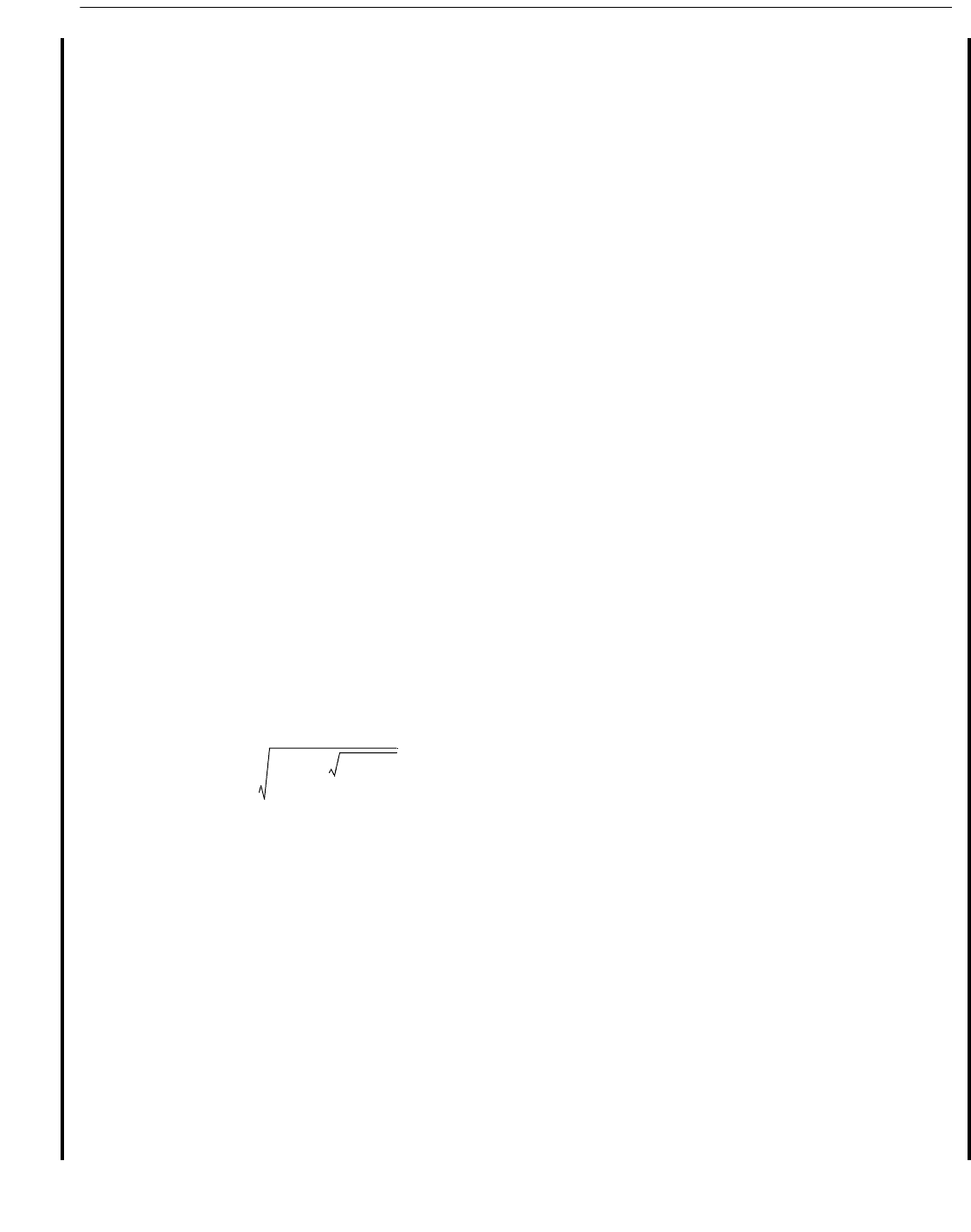
RECOMMENDED PRACTICE FOR PLANNING, DESIGNING AND CONSTRUCTING FIXED OFFSHORE PLATFORMS—WORKING STRESS DESIGN 233
•Scour
Scour (seabed erosion due to wave and current action) can
occur around offshore piles. Common types of scour are (a)
general scour (overall seabed erosion) and (b) local scour
(steep sided scour pits around single piles or pile groups).
There is no generally accepted method to account for scour in
axial capacity for offshore piles. Publications like White-
house (1998) give techniques for scour depth assessment. In
addition, general scour data may be obtained from national
authorities.
In lieu of project specific data, Commentary C6.8 gives
advice on local scour depth.
Scour decreases axial pile capacity in sand. Both friction
and end bearing components may be affected. This is because
scour reduces both q
c
and σ′
v
(vertical effective stress). For
excavations (i.e., general scour), NNI (1993) recommends
that q
c
is simply proportional to σ′
v
, i.e.,
(C6.4.3-21)
where
q
c,f
= final (i.e. after general scour) q
c
value,
q
c,o
= original (i.e. before general scour) q
c
value,
χ = dimensionless scour reduction factor = σ′
vf
/σ′
vo
,
σ′
vf
=final σ′
v
(vertical effective stress) value,
σ′
vo
=original σ′
v
(vertical effective stress) value.
For high general scour depths, an alternative conservative
approach (Fugro, 1995) for normally consolidated sands may
be to take
(C6.4.3-22)
where
z
S
= depth below final seabed level = z – S,
S = general scour depth.
Commentary C6.8 gives a σ′
v
reduction method due to
both general and local scour.
C6.4.3f Summary
This commentary has discussed four CPT q
c
-based meth-
ods for axial pile capacity that incorporate length effects and
friction fatigue. Some of these methods have been recently
made available in the literature. They have not yet been fre-
quently compared for routine offshore pile projects. Hence,
geotechnical engineering judgment will be needed to select
the most appropriate method for the design case under con-
sideration.
Additional care is required in cases of clay layers at/near
pile tip level.
References
1. ASTM International (1996), Standard Test Method for Per-
forming Electronic Friction Cone and Piezocone Penetration
Testing of Soils, ASTM D 5778-95 (Reapproved 2000),
ASTM Standards on Disc Volume 04.09: Soil and Rock (II):
D 5714 – Latest.
2. Baldi, G., Bellotti, R., Ghionna, N., Jamiolkowski, M. and
Pasqualini, E. (1986), “Interpretation of CPTs and CPTUs,
2nd Part: Drained Penetration of Sands,” in Field Instrumen-
tation and In-Situ Measurements: Proceedings of the 4th
International Geotechnical Seminar, 25 – 27 November
1986, Singapore, Nanyang Technological Institute, Sin-
gapore, pp. 143 – 156.
3. Clausen, C.J.F., Aas, P.M and Karlsrud, K. (2005), “Bear-
ing Capacity of Driven Piles in Sand, the NGI Approach,”
Proceedings International Symposium on Frontiers in Off-
shore Geotechnics [ISFOG—05], Perth, September, A.A.
Balkema, publishers, pp 677 – 682.
4. CUR Centre for Civil Engineering Research and Codes
(2001), “Bearing Capacity of Steel Pipe Piles,” CUR, Gouda,
CUR-Report, 2001-8.
5. Fugro (1995), “Final Report, Foundation Design—Bridge
Piles, Jamuna Bridge, Bangladesh,” Fugro Engineers BV
Confidential Report No. K-2380/120 to HDEC, 13 June 1995.
6. Fugro (2004), “Axial Pile Capacity Design Method for
Offshore Driven Piles in Sand,” Fugro Engineers BV Report
No. P1003 to API, Issue 3, 5 August 2004.
7. ISO International Organization for Standardization (2005),
ISO 22476-1 (DIS 2005), Geotechnical Investigation and
Testing—Field Testing—Electrical Cone and Piezocone Pen-
etration Tests, International Standard ISO 22476-1.
8. Jamiolkowski, M., Ghionna, V.N., Lancellotta, R. and Pas-
qualini, E. (1988), “New Correlations of Penetration Tests for
Design Practice,” in De Ruiter, J. (Ed.), Penetration Testing
1988: Proceedings of the First International Symposium on
Penetration Testing, ISOPT-1, Orlando, 20 – 24 March 1988,
Vol. 1, A.A. Balkema, Rotterdam, pp. 263 – 296.
9. Jardine, R., Chow, F., Overy, R., and Standing, J. (2005),
ICP Design Methods for Driven Piles in Sands and Clays,
Imperial College, Thomas Telford Publishing, London.
10. Kolk, H.J. (2000), “Deep Foundations in Calcareous
Sediments,” in Al-Shafei, K.A. (Ed.), Engineering for Cal-
careous Sediments: Proceedings of the Second International
Conference on Engineering for Calcareous Sediments, Bahr-
q
cf,
χq
co,
=
07
χ
1
12K
o
+
------------------
z
S
2K
o
Sz
S
z
S
2
++
Sz
S
+
--------------------------------------------
⎝⎠
⎜⎟
⎛⎞
=
07
Copyright American Petroleum Institute
Provided by IHS under license with API
Licensee=Indonesia location/5940240008
Not for Resale, 10/22/2008 00:07:12 MDT
--`,,```,,,`,,,,,,,,,,,,,,`,``,`-`-`,,`,,`,`,,`---
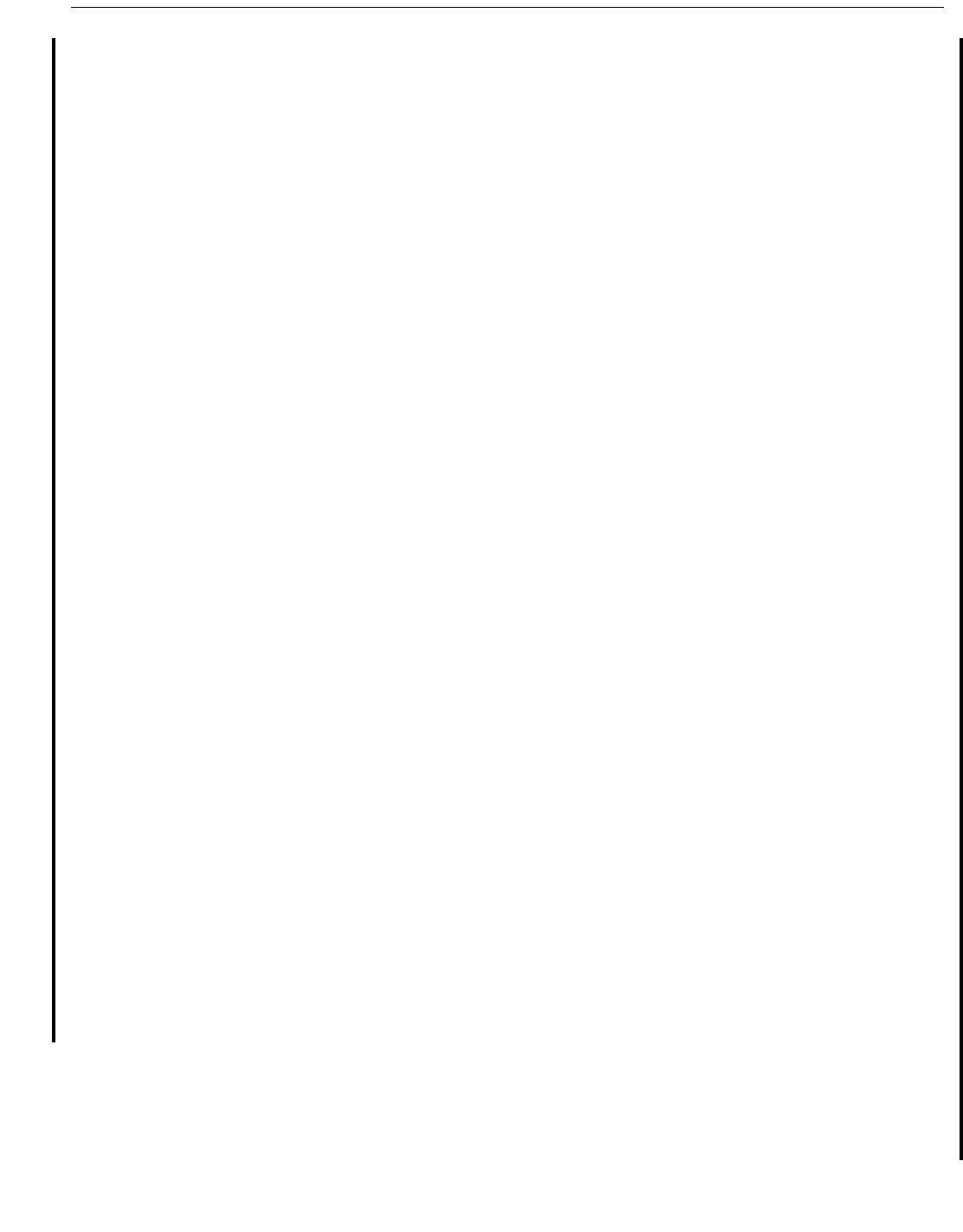
234 API RECOMMENDED PRACTICE 2A-WSD
ain, 21 – 24 February 1999, Vol. 2, A.A. Balkema, Rotter-
dam, pp. 313 – 344.
11. Kolk, H.J., Baaijens, A.E. and Senders, M. (2005),
“Design Criteria for Pipe Piles in Silica Sands,” in Gour-
venec, S. and Cassidy, M. (Eds.), Frontiers in Offshore Geo-
technics ISFOG 2005: Proceedings of the First International
Symposium on Frontiers in Offshore Geotechnics, University
of Western Australia, Perth, 19 – 21 eptember 2005, Taylor &
Francis, London, pp. 711 – 716.
12. Lehane, B.M. and Randolph, M.F. (2002), “Evaluation of
a Minimum Base Resistance for Driven Pipe Piles in Sili-
ceous Sand,” ASCE Journal Geotechnical and Geoenviron-
mental Engineering, Vol. 128, No. 3, pp. 198 – 205.
13. Lehane, B.M., Schneider, J.A. and Xu, X. (2005a), “A
Review of Design Methods for Offshore Driven Piles in Sili-
ceous Sand,” University of Western Australia Geomechanics
Group, Report No. GEO: 05358, September.
14. Lehane, B.M., Schneider, J.A. and Xu, X. (2005b),”The
UWA-05 Method for Prediction of Axial Capacity of Driven
Piles in Sand” in Gourvenec, S. and Cassidy, M. (Eds.), Fron-
tiers in Offshore Geotechnics ISFOG 2005: Proceedings of
the First International Symposium on Frontiers in Offshore
Geotechnics, University of Western Australia, Perth, 19 – 21
September 2005, Taylor & Francis, London, pp. 683 – 689.
15. NEN Nederlands Normalisatie-instituut (2003), Geotech-
nics. Calculation Method for Bearing Capacity of Pile Foun-
dation. Compression Piles, NEN 6743, Nederlandse
Normalisatie-Instituut, September.
16. Randolph, M.F., Leong, E.C. and Houlsby, G.T. (1991),
“One-dimensional Analysis of Soil Plugs in Pipe Piles,” Géo-
technique, Vol. 61, No. 4, pp. 587 – 598.
17. Thompson, G.W.L. and Jardine, R.J. (1998), “The Appli-
cability of the New Imperial College Design Method to Cal-
careous Sands,” Proc. Conf. Offshore Site Investigations and
Foundation Behaviour, Society for Underwater Technology,
London, pp. 383 – 400.
18. Whitehouse, R. (1998), Scour at Marine Structures, Tho-
mas Telford Ltd., London, UK.
19. Youd, T.L. et al. (2001), “Liquefaction Resistance of
Soils: Summary Report from the 1996 NCEER and 1998
NCEER/NSF Workshops on Evaluation of Liquefaction
Resistance of Soils,” ASCE Journal of Geotechnical and
Geoenvironmental Engineering, Vol. 127, No. 10, October,
pp. 817 – 833.
COMMENTARY ON CARBONATE SOILS,
SECTION 6.4.3
C6.1a General
Carbonate soils cover over 35 percent of the ocean floor.
For the most part, these soils are biogenic, that is they are
composed of large accumulations of the skeletal remains of
plant and animal life such as coralline algae, coccoliths, fora-
minifera, echinoderms, etc. To a lesser extent they also exist
as non-skeletal material in the form of oolites, pellets, grape-
stone, etc. These carbonate deposits are abundant in the
warm, shallow water of the tropics, particularly between 30
degrees North and South latitudes. Deep sea calcareous oozes
have been reported at locations considerably outside the mid
latitudes. Since temperature and water conditions (water
depth, salinity, etc.) have varied throughout geologic history,
ancient deposits of carbonate material may be found buried
under more recent terrestrial material outside the present zone
of probable active deposition. In the Gulf of Mexico, major
carbonate deposits are known to exist along the Florida coast-
line and in the Bay of Campeche.
C6.1.b Characteristic Features of Carbonate Soils
Carbonate soils differ in many ways from the silica rich
soils of the Gulf of Mexico. An important distinction is that
the major constituent of carbonate soils is calcium carbonate
which has a low hardness value compared to quartz, the pre-
dominant constituent of the silica rich sediments. Susceptibil-
ity of carbonate soils to disintegration (crushing) into smaller
fractions at relatively low stress levels is partly attributed to
this condition. Typically, carbonate soils have large interparti-
cle and intraparticle porosity resulting high void ratio and low
density and hence are more compressible than soils from a
terrigenous silica deposit. Furthermore, carbonate soils are
prone to post-depositional alterations by biological and
physio-chemical processes under normal pressure and tem-
perature conditions which results in the formation of irregular
and discontinuous layers and lenses of cemented material.
These alterations, in turn, profoundly affect mechanical
behavior.
The fabric of carbonate soils is an important characteristic
feature. Generally, particles of skeletal material will be angu-
lar to subrounded in shape with rough surfaces and will have
intraparticle voids. Particles of non-skeletal material, on the
other hand, are solid with smooth surfaces and without intra-
particle voids. It is generally understood that uncemented car-
bonate soils consisting of rounded nonskeletal grains that are
resistant to crushing are stronger foundation materials than
carbonate soils which show partial cementation and a low to
moderate degree of crushing.
There is information that indicates the importance of car-
bonate content as it relates to the behavior of carbonate sedi-
ments. A soil matrix which is predominately carbonate is
07
07
Copyright American Petroleum Institute
Provided by IHS under license with API
Licensee=Indonesia location/5940240008
Not for Resale, 10/22/2008 00:07:12 MDT
--`,,```,,,`,,,,,,,,,,,,,,`,``,`-`-`,,`,,`,`,,`---
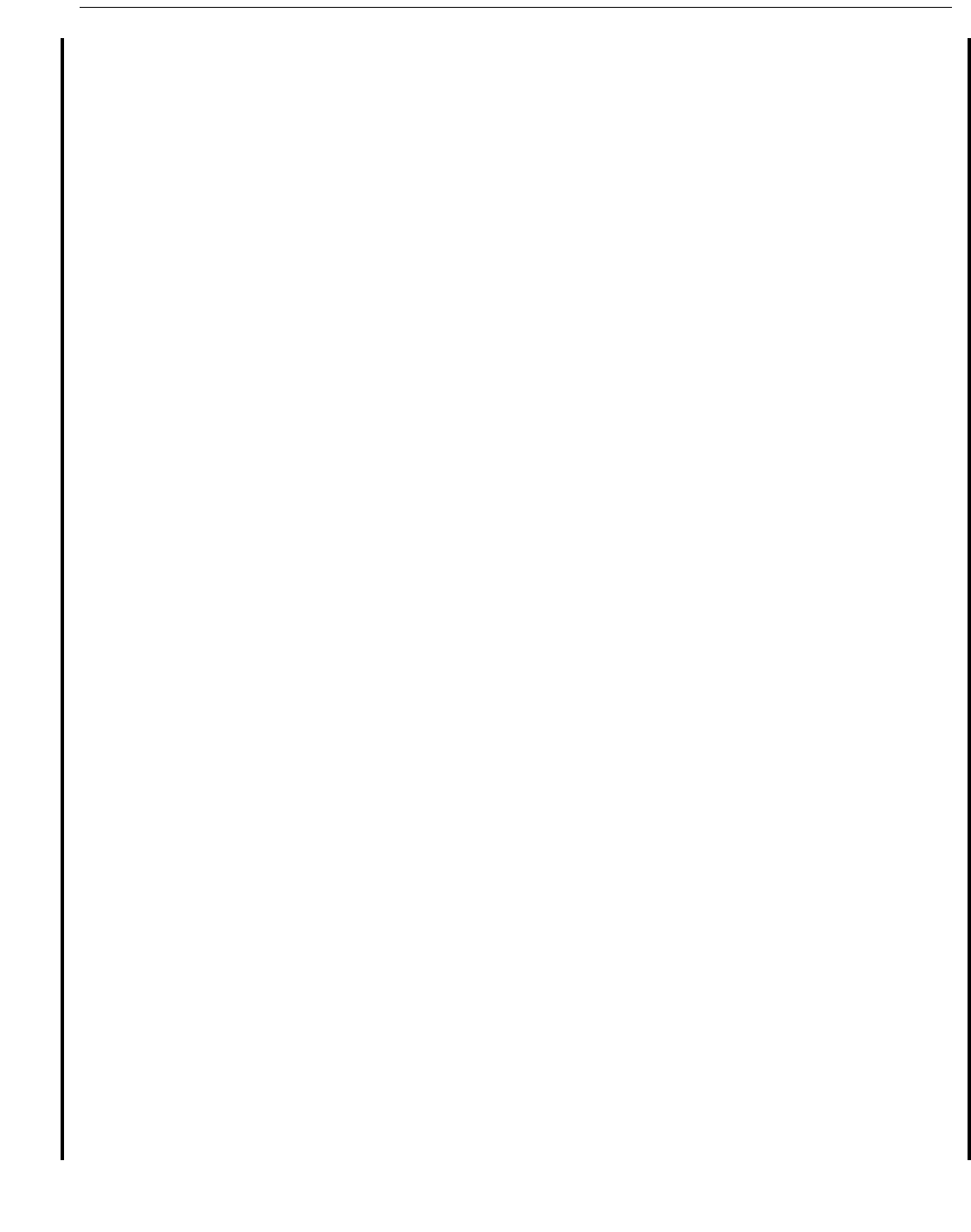
RECOMMENDED PRACTICE FOR PLANNING, DESIGNING AND CONSTRUCTING FIXED OFFSHORE PLATFORMS—WORKING STRESS DESIGN 235
more likely to undergo degradation due to crushing and com-
pressibility of the material than soil which has low carbonate
fraction in the matrix. Other important characteristic features
that influence the behavior of the material are grain angular-
ity, initial void ratio, compressibility and grain crushing.
These are interrelated parameters in the sense that carbonate
soils with highly angular particles often have a high in situ
void ratio due to particle orientation. These soils are more
susceptible to grain crushing due to angularity of the particles
and thus will be more apt to be compressed during loading.
The above is a general overview of the mechanical behav-
ior of carbonate soils. For a more detailed understanding of
material characteristics, readers are directed to the references
cited below.
C6.1.c Soil Properties
Globally, it is increasingly evident that there is no unique
combination of laboratory and in situ testing program that is
likely to provide all the appropriate parameters for design of
foundations in carbonate soils. Some laboratory and in situ
tests have been found useful. As a minimum, a laboratory
testing program for carbonate soils should determine the fol-
lowing:
1. Material composition; particularly carbonate content.
2. Material origin to differentiate between skeletal and
nonskeletal sediments.
3. Grain characteristics; such as particle angularity,
porosity and initial void ratio.
4. Compressibility of the material.
5. Soil strength parameters; particularly friction angle.
6. Formation cementation; at least in a qualitative sense.
For site characterization, maximum use of past local expe-
rience is important particularly in the selection of an appro-
priate in situ program. In new unexplored territories where
the presence of carbonate soils is suspected, selection of an in
situ test program should draw upon any experience with car-
bonate soils where geographical and environmental condi-
tions are similar.
C6.1d Foundation Performance and Current
Trends
C6.1d.1 Driven Piles
Several case histories have been reported that describe
some of the unusual characteristics of foundations on carbon-
ate soils and their often poor performance. It has been shown
from numerous pile load tests that piles driven into weakly
cemented and compressible carbonate soils mobilize only a
fraction of the capacity (as low as 15 percent) predicted by
conventional design/prediction methods for siliceous material
of the type generally encountered in the Gulf of Mexico. On
the other hand, dense, strongly cemented carbonate deposits
can be very competent foundation material. Unfortunately,
the difficulty in obtaining high quality samples and the lack
of generalized design methods sometimes make it difficult to
predict where problems may occur.
C6.1d.2 Other Deep Foundation Alternatives
The current trend for deep foundations in carbonate soils is
a move away from driven piles. However, because of lower
installation costs, driven piles still receive consideration for
support of lightly loaded structures or where extensive local
pile load test data and experience exists to substantiate the
design premise. Furthermore, driven piles may be appropriate
in competent carbonate soils. At present, the preferred alter-
native to the driven pile is the drilled and grouted pile. These
piles mobilize significantly higher unit skin friction. The
result is a substantial reduction in the required pile penetra-
tion compared with driven piles. Because of the high con-
struction cost of drilled and grouted piles, an alternative
driven and grouted pile system has received some attention in
the recent past. This system has the potential to reduce instal-
lation costs while achieving comparable capacity.
C6.1d.3 Shallow Foundations
Some evidence indicates that the bearing capacity of shal-
low foundations in weakly cemented and compressible gran-
ular carbonate deposits can be significantly lower than the
capacity in the siliceous material generally encountered in the
Gulf of Mexico. On the other hand, higher bearing capacities
have been reported where the soil is dense, strongly
cemented, competent material.
C6.1e Assessment
To date, general design procedures for foundations in car-
bonate soils are not available. Acceptable design methods
have evolved but remain highly site specific and dependent
on local experience. Stemming from some recent publications
describing poor foundation performance in carbonate soils
and the financial consequences of the remedial measures,
there is a growing tendency to take a conservative approach
to design at the mere mention of carbonate soils even if the
carbonate content in the sediment fraction is relatively low.
This is not always warranted. As with other designs, the judg-
ment of knowledgeable engineers remains a critical link in
economic development of offshore resources in carbonate
so
il environments.
References
To develop an understanding and appreciation for the
State-of-the-Practice in carbonate soil, a starting point would
be to review the proceedings from two major conferences on
carbonate soils listed below:
07
07
Copyright American Petroleum Institute
Provided by IHS under license with API
Licensee=Indonesia location/5940240008
Not for Resale, 10/22/2008 00:07:12 MDT
--`,,```,,,`,,,,,,,,,,,,,,`,``,`-`-`,,`,,`,`,,`---
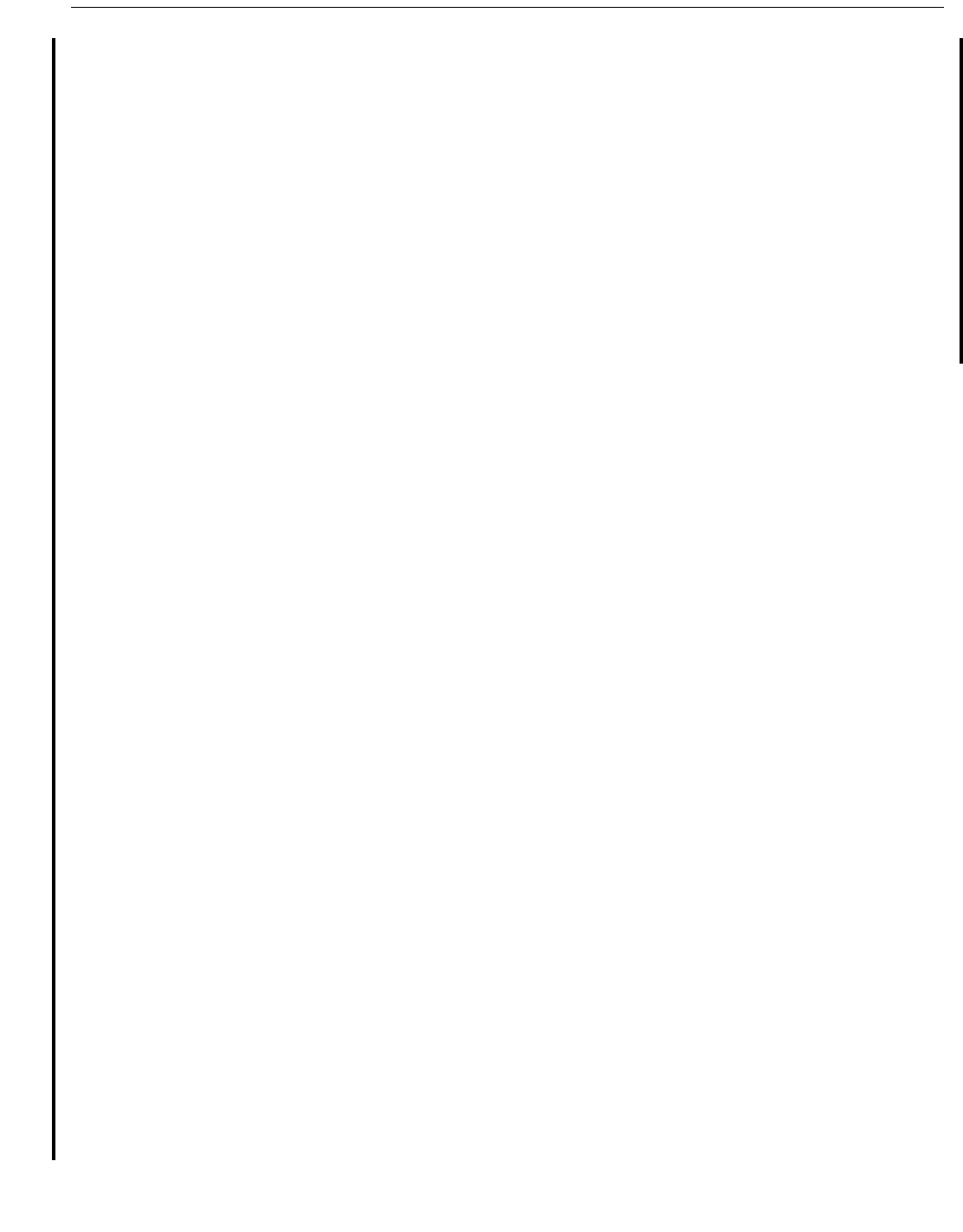
236 API RECOMMENDED PRACTICE 2A-WSD
1. Symposium on Performance and Behavior of Calcareous
Soils Sponsored by ASTM Committee D-18 on Soil and
Rock, Ft. Lauderdale, Florida, January 1981.
2. International Conference on Calcareous Sediments,
Perth, Australia, March, 1988.
Other selected references are:
1. Abbs, A. F., and Needham, A. D., Grouted Piles in Weak
Carbonate Rocks, Proceedings, 17th Offshore Technology
Conference, Houston, Texas, Paper No. 4852, May 1985.
2. Angemeer, J., Carlson, E., and Klick, J. H., Techniques
and Results of Offshore Pile Load Testing in Calcareous
Soils, Proceedings, 5th Offshore Technology Conference,
Houston, Texas, Paper No. 1894, May 1973.
3. Barthelemy, H. C., Martin, R., Le Tirant, P. M., and Nau-
roy, J. F., Grouted Driven Piles: An Economic and Safe Alter-
nate for Pile Foundation, Proceedings, 19th Offshore
Technology Conference, Houston, Texas, Paper No. 5409,
1987.
4. Clark, A. R., and Walker, B. F., A Proposed Scheme for
the Classification and Nomenclature for Use in the Engineer-
ing Description of Middle Eastern Sedimentary Rocks, Geo-
technique, Vol. 27, No. 1, 1977.
5. Datta, M., Gulhati, S. K., and Rao, G. V., Crushing of
Calcareous Sands During Shear, Proceedings 11th Offshore
Technology Conference, Houston, Paper No. 3525, 1979.
6. Dutt, R. N., and Cheng, A. P., Frictional Response of
Piles in Calcareous Deposits, Proceedings, 16th Offshore
Technology Conference, Houston, Texas, Paper No. 4838,
May 1984.
7. Dutt, R. N., Moore, J. E., Mudd, R. W., and Rees, T. E.,
Behavior of Piles in Granular Carbonate Sediments from
Offshore Philippines, Proceedings, 17th Offshore Technology
Conference, Houston, Texas, Paper No. 4849, May 1985.
8. Fragio, A. G., Santiago, J. L., and Sutton, V. J. R., Load
Tests on Grouted Piles in Rock, Proceedings, 17th Offshore
Technology Conference, Houston, Texas, Paper No. 4851,
May 1985.
9. Gilchrist, J. M., Load Tests on Tubular Piles in Coralline
Strata, Journal of Geotechnical Engineering, ASCE, Vol, III,
No. 5, 1985.
10. Murff, J. D., Pile Capacity in Calcareous Sands; State-of-
the-Art, Journal of Geotechnical Engineering, ASCE, Vol,
113, No. 5, May 1987.
11. Nauroy, J. F., Brucy, F., and Le Tirant, P., Static and
Cyclic Load Tests on a Drilled and Grouted Pile in Calcare-
ous Sands, Proceedings, 4th International Conference on
Behavior of Offshore Structures, BOSS’85, Delft, July 1985.
12. Noorany, I., Friction of Calcareous Sands, Report to Civil
Engineering Laboratory, Naval Construction Battalion Cen-
ter, Port Hueneme, California, P.O. No. N62583/81 MR647,
March 1982.
13. Poulos, H. G., Uesugi, M. and Young, G. S., Strength and
Deformation Properties of Bass Strait Carbonate Sands,
Geotechnical Engineering, Vol. 2, No. 2, 1982.
14. Poulos, H. G., Cyclic Degradation of Pile Performance in
Calcareous Soils, Analysis and Design of Pile Foundations,
Joseph Ray Meyer, Editor, October 1984.
15. Poulos, H. G., Chua, E. W., Bearing Capacity of Founda-
tions on Calcareous Sand, Proceedings, 11th International
Conference on Soil Mechanics and Foundation Engineering,
Vol, 3, San Francisco, California, 1985.
COMMENTARY ON PILE CAPACITY FOR
AXIAL CYCLIC LOADINGS, SECTION 6.6.2
C6.6.2a General
The axial capacity of a pile is defined as its maximum axial
load resistance while pile performance is a specified service
requirement (e.g., deflection(s) at the pile head). Both axial
capacity and pile performance are dependent upon many vari-
ables (e.g., the types of soils, the pile characteristics, the
installation methods, and the loading characteristics) and
should be considered in pile design. This commentary
addresses the influences of cyclic loading characteristics on
axial capacity and pile performance.
C6.6.2b Loadings
Axial loadings on piles are developed from a wide variety
of operating, structural, and environmental sources.
1
Operat-
ing (equipment, supplies) and structural (dead weight, buoy-
ancy) loadings are generally long duration loadings, often
referred to as static loadings. Refer to Section 2.1.2 for more
detailed definitions.
Environmental loadings are developed by winds, waves
and currents, earthquakes and ice floes. These loadings can
have both low and high frequency cyclic components in
which the rates of load application and duration are measured
in seconds. Storm and ice loadings can have several thousand
cycles of applied forces, while earthquakes can induce sev-
eral tens of cycles of forces.
1
C6.6.2c Static Capacity
For most fixed offshore platforms supported on piles,
experience has proven the adequacy of determining pile pen-
etration based on static capacity evaluations, and static ulti-
mate design loads and commonly accepted factors-of-safety
2
that, in part, account for the cyclic loading effects.
07
07
Copyright American Petroleum Institute
Provided by IHS under license with API
Licensee=Indonesia location/5940240008
Not for Resale, 10/22/2008 00:07:12 MDT
--`,,```,,,`,,,,,,,,,,,,,,`,``,`-`-`,,`,,`,`,,`---

RECOMMENDED PRACTICE FOR PLANNING, DESIGNING AND CONSTRUCTING FIXED OFFSHORE PLATFORMS—WORKING STRESS DESIGN 237
For some novel platform concepts (e.g., Compliant Tow-
ers, Tension Leg Platforms) soils, and loading conditions, or
when there are unusual limitations on pile penetrations,
detailed considerations of cyclic loading effects may be
warranted.
C6.6.2d Cyclic Loading Effects
Compared with long-term, static loadings, cyclic loadings
may have the following important influence on pile axial
capacity and stiffness:
– Decrease capacity and stiffness due to the repeated
loadings.
3
– Increase capacity and stiffness due to the high rates of
loadings,
4
whether cyclic or non-cyclic.
The resultant effect on capacity is primarily influenced by
the pile properties (stiffness, length, diameter, material), the
soil characteristics (type, stress history, strain rate, and cyclic
degradation), and the loadings (numbers and magnitudes of
repeated loadings).
Cyclic loading may also cause accumulation of pile dis-
placements and either stiffening and strengthening or soften-
ing and weakening of the soils around the pile.
Hysteretic and radiation damping dissipate the loading
energy in the soil.
5
For earthquakes, the free-field ground
motions (independent of the presence of the piles and struc-
ture) can develop important cyclic straining effects in the
soils; these effects may influence pile capacity and stiff-
ness.
6,7
C6.6.2e Analytical Models
A variety of analytical models have been developed and
applied to determine the cyclic axial response of piles. These
models can be grouped into two general categories:
1. Discrete Element Models—The soil around the pile is
idealized as a series of uncoupled “springs” or elements
attached between the pile and the far field soil (usually
assumed rigid). The material behavior of these elements may
vary from linearly elastic to non-linear, hysteretic, and rate
dependent. The soil elements are commonly referred to as T-
Z (shaft resistance-displacement) and Q-Z (tip resistance-dis-
placement) elements.
7-10
Linear or non-linear dashpots
(velocity dependent resistances) can be placed in parallel and
series with the discrete elements to model radiation damping
and rate of loading effects.
11, 12
The pile can also be modeled
as a series of discrete elements, e.g., rigid masses intercon-
nected by springs or modeled as a continuous rod, either
linear or non-linear. In these models material properties (soil
and pile) can vary along the pile.
2. Continuum Models—The soil around the pile is ideal-
ized as a continuum attached continuously to the pile. The
material behavior may incorporate virtually any reasonable
stress-strain rules the analyst can devise. Depending on the
degree of non-linearity and heterogeneity, the model can be
quite complicated. Again the pile is typically modeled as a
continuous rod, either linear or nonlinear. In these models
material properties can vary in any direction.
13-15
There are a wide range of assumptions that can be used
regarding boundary conditions, solution characteristics, etc.,
that lead to an unlimited number of variations for either of the
two approaches.
Once the idealized model is established and the relevant
equations developed, then a solution technique must be
selected. For simple models, a closed form analytic approach
may be possible. Otherwise a numerical procedure must be
used. In some cases a combination of numerical and analyti-
cal approaches is helpful. The most frequently used numeri-
cal solution techniques are the finite difference method and
the finite element method. Either approach can be applied to
both the discrete element and continuum element models.
Discrete element and continuum element models are occa-
sionally combined in some instances.
1,11
Classical finite ele-
ment models have been used for specialized analyses of piles
subject to monotonic axial loadings.
13
For practical reasons discrete element models solved
numerically have seen the most use in evaluation of piles sub-
jected to high intensity cyclic loadings. Results from these
models are used to develop information on pile accumulated
displacements and on pile capacity following high intensity
cyclic loadings.
9,10
Elastic continuum models solved analytically (similar to
those used in machine vibration analyses) have proven to be
useful for evaluations of piles subjected to low intensity, high
frequency cyclic loadings at or below design working load-
ings.
13,14
At higher intensity loading, where material behav-
ior is likely to be nonlinear, the continuum model solved
analytically can still be used by employing equivalent linear
properties that approximate the nonlinear, hysteretic effects.
16
C6.6.2f Soil Characterization
A key part of developing realistic analytical models to
evaluate cyclic loading effects on piles is the characterization
of soil-pile interaction behavior. High quality in-situ, labora-
tory, and model-prototype pile load tests are essential in such
characterizations. In developing soil-pile interaction (soil)
characterizations, it is important that pile installation, and pile
loading conditions be integrated into the testing programs.
1,10
In-situ tests (e.g., vane shear, cone penetrometer, pressure
meter) can provide important insights into in-place soil
behavior and stress-strain properties.
17
Both low and high
amplitude stress-strain properties can be developed. Long-
term (static, creep), short-term (dynamic, impulsive), and
cyclic (repeated) loadings sometimes can be simulated with
in-situ testing equipment.
Copyright American Petroleum Institute
Provided by IHS under license with API
Licensee=Indonesia location/5940240008
Not for Resale, 10/22/2008 00:07:12 MDT
--`,,```,,,`,,,,,,,,,,,,,,`,``,`-`-`,,`,,`,`,,`---

238 API RECOMMENDED PRACTICE 2A-WSD
Laboratory tests on representative soil samples permit a
wide variety of stress-strain conditions to be simulated and
evaluated.
18
Soil samples can be modified to simulate pile
installation effects (e.g., remolding and reconsolidating to
estimated in-situ stresses). The samples can be subjected to
different boundary conditions (triaxial, simple-shear, inter-
face-shear), and to different levels of sustained and cyclic
shear time histories to simulate in-place loading conditions.
Tests on model and prototype piles are another important
source of data to develop soil characterizations for cyclic
loading analyses. Model piles can be highly instrumented,
and repeated tests performed in soils and for a variety of load-
ings.
19,20
Geometric scale, time scale and other modeling
effects should be carefully considered in applying results
from model tests to prototype behavior analyses.
Data from load tests on prototype piles are useful for cali-
brating analytical models.
21–24
Such tests, even if not highly
instrumented, can provide data to guide development of ana-
lytical models. These tests can also provide data to verify
results of soil characterizations and analytical mod-
els.
1,10,11,25,26
Prototype pile load testing coupled with in-situ
and laboratory soil testing, and realistic analytical models can
provide an essential framework for making realistic evalua-
tions of the responses of piles to cyclic axial loadings.
C6.6.2g Analysis Procedure
The primary steps in performing an analysis of cyclic axial
loading effects on a pile using discrete element models are
summarized in the following sections.
1. Loadings. The pile head loadings should be characterized
in terms of the magnitudes, durations, and numbers of cycles.
This includes both long-term loadings and short-term cyclic
loadings. Typically, the design static and cyclic loadings
expected during a design event are chosen.
2. Pile Properties. The properties of the pile including its
diameter, wall thickness, stiffness properties, weight, and
length must be defined. This will require an initial estimate of
the pile penetration that might be appropriate for the design
loadings. Empirical, pseudostatic methods based on pile load
tests or soil tests might be used to make such estimates.
3. Soil Properties. Different analytical approaches will
require different soil parameters. For the continuum model
the elastic properties of the soil (E, G, ν, D) are required. In
the discrete element model soil resistance-displacement rela-
tionships along the pile shaft (T-Z) and at its tip (Q-Z) should
be determined. In-situ and laboratory soil tests, and model
and prototype pile load tests can provide a basis for such
determinations. These tests should at least implicitly include
the effects of pile installation, loading, and time effects. In
addition, the test should be performed so as to provide insight
regarding the effects of pile loading characteristics. Most
importantly, the soil behavior characteristics must be appro-
priate for the analytical model(s) to be used, duly recognizing
the empirical bases of these models.
4. Cyclic Loading Analyses. Analyses should be performed
to determine the response (load resistance and displacement)
characteristics of the pile subjected to its design static and
cyclic loadings. Recognizing the inherent uncertainties in
evaluations of pile loadings and soil-pile behavior, parametric
analyses should be performed to evaluate the sensitivities of
the pile response to these uncertainties. The analytical results
should develop realistic predictions of pile load resistance
and accumulated displacements at design loadings. In addi-
tion, following the simulation of static and cyclic design
loadings, the pile should be further analyzed so as to estimate
its reserve capacity and after-cyclic loading resistance.
C6.6.2h Performance Requirements
A primary objective of these analyses is to ensure that the
pile and its penetration are adequate to meet the structure’s
serviceability and capacity (Ultimate Limit State) require-
ments.
In conventional static capacity based design, the pile
design loading (static dead and operating plus maximum
amplitude of cyclic loadings) is compared against the pile
capacity (Ultimate Limit State). The pile capacity is defined
as the integrated shaft and tip resistance (Section 2.6.4). An
allowable load is calculated in accordance with Section
2.6.3d. This procedure ensures that the pile has an adequate
margin of safety above its design loading to accommodate
uncertainties in loadings and pile resistances.
The pile performance for explicit cyclic loading analyses
should be evaluated for both serviceability and Ultimate
Limit State conditions. At static and cyclic loading conditions
appropriate for serviceability evaluations, the pile stiffness,
settlements, and displacements must not impede or hamper
structure operations. The pile should have a capacity (Ulti-
mate Limit State) that provides an adequate margin of safety
above its design loadings. In addition, the pile must not settle
or pullout, nor accumulate displacements to the extent that
could constitute failure of the structure-foundation system.
C6.6.2j Qualifications
Modeling cyclic loading effects explicitly may improve the
designers insight into the relative importance of the loading
characteristics. On the other hand extreme care should be
exercised in applying this approach; historically, cyclic
effects have been accounted for implicitly. Design methods
developed and calibrated on an implicit basis may need
extensive modification where explicit algorithms are
employed.
Copyright American Petroleum Institute
Provided by IHS under license with API
Licensee=Indonesia location/5940240008
Not for Resale, 10/22/2008 00:07:12 MDT
--`,,```,,,`,,,,,,,,,,,,,,`,``,`-`-`,,`,,`,`,,`---
